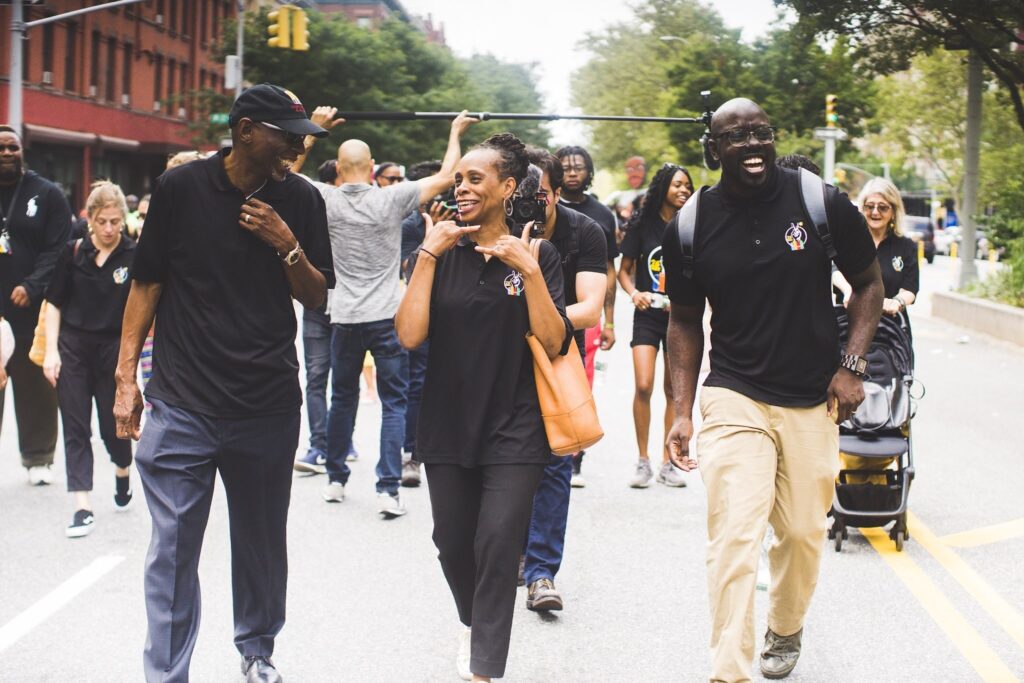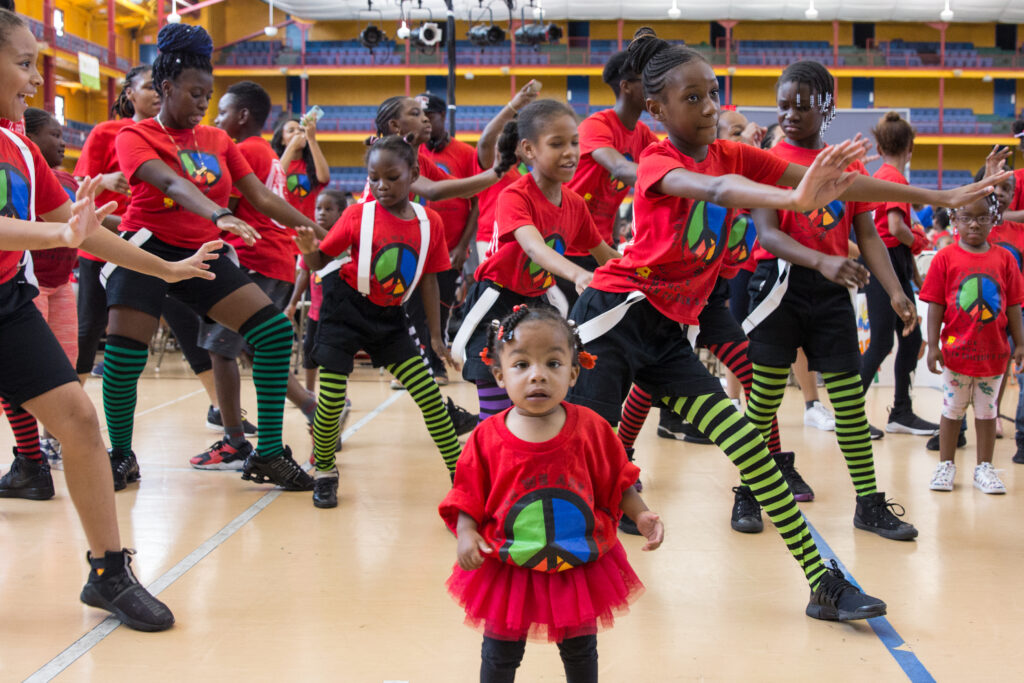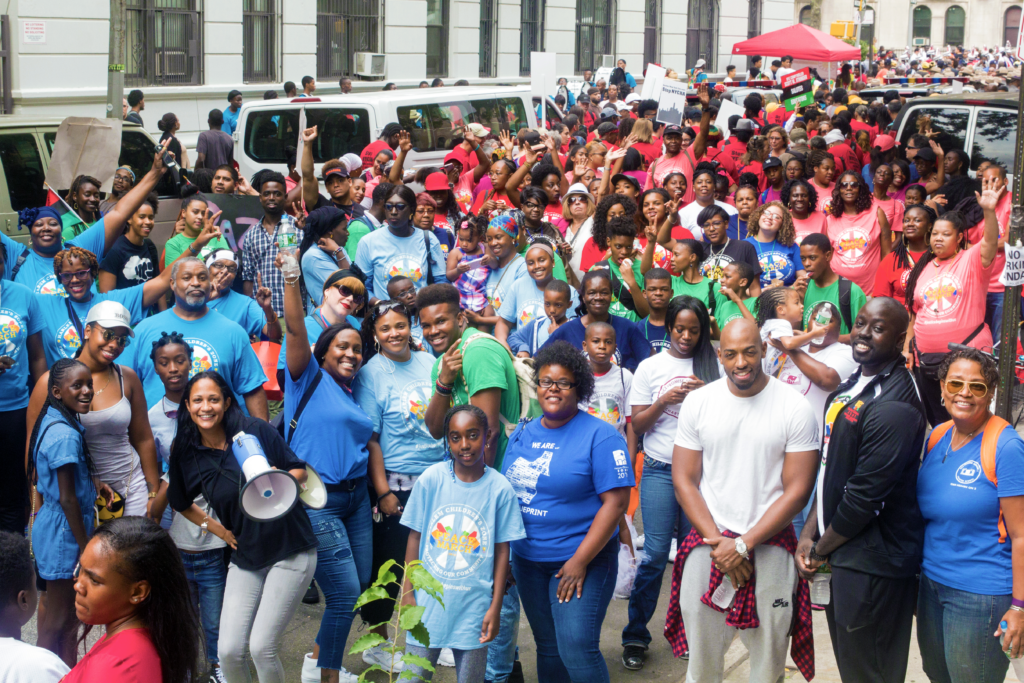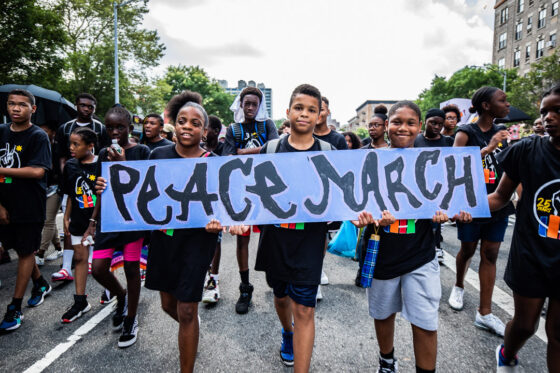In the summer of 1994, a group of children and young adults embarked on a March for Peace along Adam Clayton Powell Boulevard in Central Harlem, their presence undeniable. Walking hand-in-hand, chanting, and carrying brightly colored signs, they spoke out against an issue that had taken the lives of so many children in their community: gun violence.
That group was Peacemakers, and they represented Harlem Children’s Zone.
“All these children are dying,” Salahadeen “Sal” Betts, a member of the Peacemakers staff who is now HCZ’s Associate Director of Communications, said at the time. “People are saying we need to change things. But we need to change things — and look out for our kids — now.”
This month, the entire HCZ community will march again — fighting for the same cause that brought us to the streets nearly three decades earlier — at our 30th Annual Rasuli Lewis Children’s March for Peace. The event returns, in-person, for the first time since 2019.
Building a movement against gun violence
When Peacemakers assembled for the first Children’s March for Peace, it was about life and death. That summer marked a string of killings amid an epidemic of gun violence in Central Harlem — including the death of an elementary school girl who was struck and killed by a stray bullet while she was eating breakfast in her apartment.
Peacemakers decided enough was enough. Quickly and decisively, the group took it upon themselves to confront the gun violence robbing children of the ability to play, learn, and live peacefully in their community.
“Peacemakers were charged with starting a movement led by our young people, and that’s exactly what we did,” said Erica Terrell, one of the original Peacemakers staff members who is now our Managing Director of Practitioners Institute. “That gave rise to our Children’s March for Peace.”

Honoring the late great Rasuli Lewis
The launch of Children’s March for Peace is thanks, in no small part, to a legendary figure at HCZ: the late Rasuli Lewis. Upon joining HCZ in 1993, Rasuli became director of Peacemakers, and for 10 years, developed the anti-violence program into a strong and critical element of our network of comprehensive, cradle-to-career services.
“Rasuli Lewis was an awesome individual — a mentor and a leader, not only here in Harlem, but also nationally,” said Jazmine Lewis, an original Peacemaker staff member, mentee of Lewis, and now, our Chief Strategy Officer. “He believed that children from under-resourced communities deserved an opportunity to thrive and grow.”
Rasuli was instrumental in mentoring Peacemakers staff, many of whom had shared similar challenges — homelessness, abuse, and a lack of resources — with the children they served. Rasuli taught the Peacemakers staff to leverage their own experiences, and the lessons they had learned, “to help children realize their power and potential,” Jazmine says.
Led by scholars in Peacemakers, and with the support of the program’s staff, the March for Peace took hold in the community. Rasuli passed away in 2019, just days before the most recent in-person March for Peace. The event has been renamed for him and continues every year in his honor.
Peacemakers for life
If he were here today, Rasuli would be proud of the HCZ community. The March for Peace is still going strong. Peacemakers still exists, now as a program that partners with select Harlem public elementary and middle schools to support scholar growth and achievement.
But Rasuli’s impact didn’t end with Peacemakers: his legacy lives on in HCZ’s leaders.
“If it was not for Harlem Children’s Zone, Geoffrey Canada, Rasuli Lewis, and Peacemakers, I would not be here today,” said Brian McClendon, an original member of the Peacemakers staff who is now Managing Director of Place at our William Julius Wilson Institute. “I would either be incarcerated, like many of my friends growing up, or I would be under the ground.”

“Meeting Rasuli changed the trajectory of my life,” Jazmine said. “It afforded me the opportunity to develop as a woman, and as a Black woman, and come into my own in terms of being unapologetic about my intellect and who I am.”
These present leaders are now helping to shape our future leaders and create a legacy of peace and progress in Central Harlem and beyond. At this year’s Children’s March for Peace, our community will come together once again, hand-in-hand, and march to build on that legacy.
Rasuli Lewis once said, “Peace is not just the absence of violence, but people caring for each other and doing the right thing. Peacemakers are people who actually make an investment in their community and do it for the rest of our lives.”
Original Peacemakers staff members like Jazmine, Sal, Erica, and Brian have committed to investing in Harlem — and, indeed, are Peacemakers for life.



